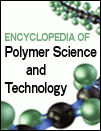Additives
Abstract
Additives for plastics are typically organic molecules that are added to polymers in small amounts during the manufacture, melt processing, or converting operations so as to improve the inherent properties of the polymeric material. Additives can be categorized in three major segments. The Polymer Modifiers alter the physical or mechanical properties of plastics such as clarifiers or nucleants that enhance respectively the clarity of plastics or increase the rate of crystallization for improved properties such as cycle time reduction in injection molding. The Performance Enhancer additives impart functionality not present in the plastic such as enhanced longevity against environmental factors like heat or light energy when antioxidants or ultraviolet-light absorbers are used. Additional “special effects” are imparted to plastics by performance enhancer additives such as antistatic or biocidal resistance. The Processing Aids are the smallest volume category and are surface-active additives that improve throughput in polymer processing operations or improve surface appearance of plastic articles like blown film.
Poly(vinyl chloride) is the largest volume consumer of additives particularly impact modifiers and plasticizers due to the commodity (billion pound) usage of PVC in global construction markets. New technology innovations have occurred largely in niche, higher value additive areas driven either by higher performance demands of customer segments or to a lesser extent by regulatory pressures surrounding environmental or sustainability concerns. Innovation activity has been pronounced in areas of nucleants, electrostatic additives like carbon nanotubes, and polymer processing aids.



